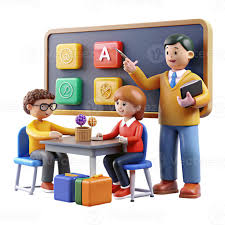The evolving landscape of education has welcomed unlikely allies into its fold—animated characters that captivate young imaginations. The innovative teacher of today recognizes the pedagogical potential inherent in kids animated shows, transforming what might once have been considered mere entertainment into powerful educational vehicles. This integration represents a significant shift in educational methodology, acknowledging children’s natural affinity for animated storytelling.
Research in educational psychology supports this approach, revealing that information presented through narrative and character-driven scenarios creates stronger memory pathways than abstract instruction alone. The characters in quality animated programming become cognitive anchors, helping children attach new information to these memorable figures and their adventures. This character association creates retrieval cues that enhance recall during assessments and practical application of knowledge.
The visual literacy skills developed through guided viewing of animated content transfer directly to academic success across multiple subjects. When teachers discuss visual symbolism, color theory, perspective, and composition as seen in animated shows, they build critical observation abilities that enhance comprehension in reading, science, mathematics, and social studies. These visual interpretation skills form the foundation for more complex analytical thinking in later academic pursuits.
Animation’s ability to represent abstract concepts through concrete imagery makes it particularly valuable for teaching scientific and mathematical principles. Concepts like photosynthesis, blood circulation, or fraction relationships become accessible when visualized through animated sequences that slow down, magnify, or otherwise make visible processes that cannot be directly observed in the classroom. These visualizations create accurate mental models that prevent misunderstandings common in abstract instruction.
The emotional intelligence curriculum found in many contemporary animated programs aligns perfectly with social-emotional learning objectives in modern education. When teachers reference how animated characters navigate emotions, resolve conflicts, or demonstrate empathy, they provide students with models for their own social development. These character examples become shorthand references during classroom discussions about appropriate emotional expression and interpersonal problem-solving.
Literacy instruction finds natural enhancement through animation connections. When teachers link phonics lessons to characters whose names begin with target sounds, or connect reading comprehension strategies to how animated heroes solve mysteries or follow clues, they create immediate engagement with fundamental literacy skills. These character associations make abstract reading processes more concrete and memorable.
The collaborative production process behind animated shows provides an excellent model for project-based learning approaches. Teachers who explore how animation studios bring together artists, writers, voice actors, musicians, and technical specialists demonstrate the real-world value of teamwork and diverse skills. This production lens transforms passive viewing into analysis of creative collaboration, highlighting career pathways and the importance of diverse contributions.
Multicultural education objectives find strong support in the increasingly diverse world of children’s animation. Modern animated programming frequently features characters from various cultural backgrounds, abilities, and family structures. When teachers thoughtfully select and discuss this content, they normalize diversity and build inclusive mindsets that recognize and value differences as community strengths.
Growth mindset principles appear regularly in animated programming through characters facing challenges, experiencing setbacks, and persevering toward goals. Teachers who highlight these narrative arcs during classroom discussions reinforce the value of effort, resilience, and learning from mistakes. These animated examples provide concrete illustrations of abstract psychological principles in ways children readily understand and remember.
Digital citizenship concepts find natural context in discussions about animated content creation and consumption. When educators guide conversations about animation production, appropriate viewing choices, and media balance, they help students develop critical awareness that transfers to all aspects of digital life. These discussions build foundational understanding of media literacy that will serve children throughout their increasingly digital lives.
Curriculum integration across multiple subjects becomes more seamless when teachers use animated content as thematic anchors. A single episode might contain elements relevant to science, language arts, social studies, and character education, providing rich material for cross-disciplinary learning experiences. This integration helps students recognize connections between traditionally separate subjects, building more cohesive understanding.
Parent engagement increases when teachers communicate about how animated content connects to classroom learning. When educators suggest specific episodes that reinforce current units of study, they provide families with concrete ways to extend classroom conversations at home. This school-home connection transforms family viewing time into valuable educational opportunities that reinforce formal instruction.
As we look toward future educational developments, the thoughtful integration of animated content into evidence-based teaching practices represents not a temporary trend but an evolution in how we address the needs of digital natives. By embracing these powerful narrative tools while maintaining focus on rigorous educational objectives, forward-thinking educators create learning environments where engagement and education seamlessly intertwine in service of student development.

